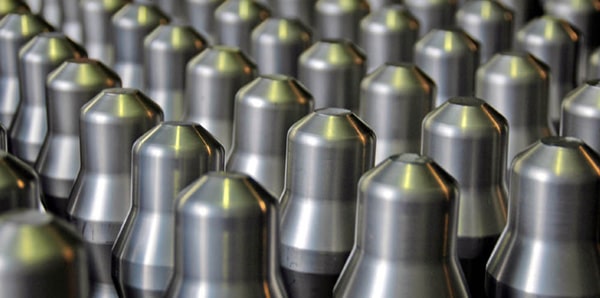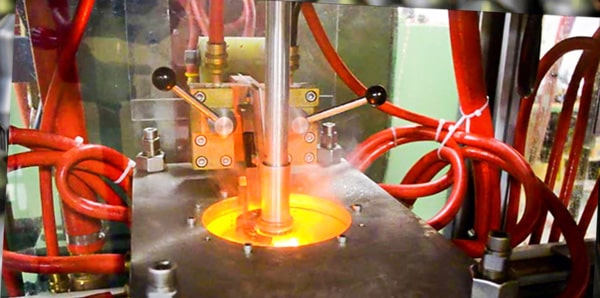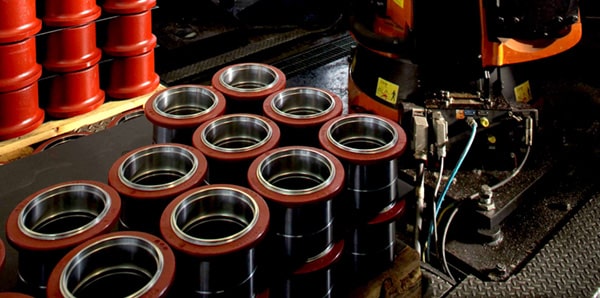
Carburising Hardening & Tempering(CHT)
It is the Chemical Thermal process in which enrichment of a surface depth of low carbon steels with Carbon then hardened (quenched) and tempered. It leads to the development of a combination of High Surface Hardness with good wear resistance as well as High Toughness and Impact strength due to core. This process is used for many engineering parts like Heavy Duty Gears, Cam, Shafts, Ball Bearing, Bushing, rock drilling bits etc.

Carbonitriding Hardening & Tempering(CNHT)
It is the Chemical Thermal process in which enrichment of a surface depth of low carbon steels with Carbon and Nitrogen then hardened (quenched) and tempered. It leads to the development of a combination of Very High Surface Hardness with good wear resistance as well as High Toughness and Impact strength due to core. This process is used for many engineering parts like Gears, Ball Bearing, Bushing, Sheet metal parts.

Through Hardening & Tempering
It is the chemical thermal process in which Heating the steel to proper austenitising temperature and soaking at this temperature then quenched in water, polymer, salt or oil. It develops good Hardness, develop High yield strength with good toughness and ductility.

Normalising, Quenching & Tempering(NQT)
Normalizing process is a heat treatment process which is takes place at temperature 820 – 950 ºC and then followed by air cooling up to Room temperature, After that this material again do Hardening. In Normalising process material become softer as well as uniform distribution of core structure of ferrite and Pearlite. After Hardening Tempering Parts structure changes with Martensite. Which gives good Hardness, Strength, toughness.

Only Carburising
Only Carburizing is a heat treatment process that only carbon penetration takes place but quenching is not takes place. Parts cool in air inside furnace. Which is do for removal of material from non carburising area (like threaded portion).

Nitriding
It is the Chemical Thermal process in which enrichment of a surface depth of carbon steels with Nitrides at temperature 500 – 575 ºC. It develops very high hardness with very good wear resistance, to improve fatigue properties, to improve corrosion resistance, case has high resistance to tempering.

Nitrocarburising
It is the Chemical Thermal process in which enrichment of a surface depth of carbon steels with Carbon and Nitrides at temperature 500 – 575 ºC. It develops very high hardness with very good wear resistance, to improve fatigue properties, to improve corrosion resistance, case has high resistance to tempering.

Annealing & Solution Annealing
Annealing is a heat treatment that alters the physical and sometimes chemical properties of a material to increase its ductility and reduce its hardness, making it more workable.
Solution annealing is a high temperature heat treat process where the alloying elements of the material are brought into a solid solution. The solid solution condition is maintained by quenching the material in water or polymer.

Martensitic Stainless-Steel Hardening
Martensitic stainless steels are normally hardened by heating in the austenitizing range of 925 to 1080oC and then cooled in air or oil. It develop good hardness, Corrosion Resistance and strength.

Austempering
It is the Chemical Thermal process in which Heat steel above austenite temperature and austenite transforms isothermally to lower bainite. It reduces the distortion and cracks in high carbon steel. Austempered steel are superior than Hardening Tempered Steel. And it improves ductility at the same hardness.

Marquenching
Marquenching is an interrupted quenching process employed to minimise the risk of cracking and distortion of the quenched parts. The internal stresses developed due to volume growth in the core are minimised by Marquenching. This helps to prevent cracking and minimise distortion.

Stress relieving
Stress relieving is a technique to remove or reduce the internal stresses created in a metal. These stresses may be caused in a number of ways, ranging from cold working to non-uniform cooling. Stress relieving is usually accomplished by heating a metal below the lower critical temperature and then cooling uniformly. Stress relieving is commonly used on items like air tanks, boilers and other pressure vessels, to remove all stresses created during the welding process.
